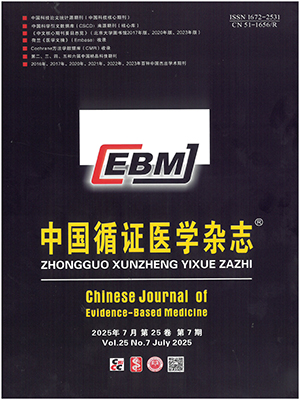| 1. |
Zucker DR, Ruthazer R, Schmid CH. Individual (N-of-1) trials can be combined to give population comparative treatment effect estimates: methodologic considerations. J Clin Epidemiol, 2010, 63(12): 1312-1323.
|
| 2. |
Sung L, Tomlinson GA, Greenberg ML, et al. Serial controlled N-of-1 trials of topical vitamin E as prophylaxis for chemotherapy-induced oral mucositis in paediatric patients. Eur J Cancer, 2007, 43(8): 1269-1275.
|
| 3. |
朱丽叶. 分层模型与贝叶斯方法. 广州: 暨南大学, 2012.
|
| 4. |
Zucker DR, Schmid CH, Mcintosh MW, et al. Combining single patient (N-of-1) trials to estimate population treatment effects and to evaluate individual patient responses to treatment. J Clin Epidemiol, 1997, 50(4): 401-410.
|
| 5. |
Nathan PC, Tomlinson G, Dupuis LL, et al. A pilot study of ondansetron plus metopimazine vs. ondansetron monotherapy in children receiving highly emetogenic chemotherapy: a Bayesian randomized serial N-of-1 trials design. Support Care Cancer, 2006, 14(3): 268-276.
|
| 6. |
Zucker DR, Ruthazer R, Schmid CH, et al. Lessons learned combining N-of-1 trials to assess fibromyalgia therapies. J Rheumatol, 2006, 33(10): 2069-2077.
|
| 7. |
Huber AM, Tomlinson GA, Koren G, et al. Amitriptyline to relieve pain in juvenile idiopathic arthritis: a pilot study using Bayesian metaanalysis of multiple N-of-1 clinical trials. J Rheumatol, 2007, 34(5): 1125-1132.
|
| 8. |
Coxeter PD, Schluter PJ, Eastwood HL, et al. Valerian does not appear to reduce symptoms for patients with chronic insomnia in general practice using a series of randomised n-of-1 trials. Complement Ther Med, 2003, 11(4): 215-222.
|
| 9. |
Lunn DJ, Thomas A, Best N, et al. WinBUGS-A bayesian modelling framework: concepts, structure, and extensibility. Stat Comput, 2000, 10(4): 325-337.
|
| 10. |
Nikles CJ, McKinlay L, Mitchell GK, et al. Aggregated n-of-1 trials of central nervous system stimulants versus placebo for paediatric traumatic brain injury-a pilot study. Trials, 2014, 15: 54.
|
| 11. |
Willke RJ, Zheng Z, Subedi P, et al. From concepts, theory, and evidence of heterogeneity of treatment effects to methodological approaches: a primer. BMC Med Res Methodol, 2012,(12): 185.
|
| 12. |
Gabler NB, Duan N, Liao D, et al. Dealing with heterogeneity of treatment effects: is the literature up to the challenge? Trials, 2009, 10: 43.
|
| 13. |
Nikles J, Mitchell GK, Schluter P, et al. Aggregating single patient (n-of-1) trials in populations where recruitment and retention was difficult: the case of palliative care. J Clin Epidemiol, 2011, 64(5): 471-480.
|
| 14. |
Zhai JB, Cao HB, Ren M, et al. Reporting of core items in hierarchical Bayesian analysis for aggregating N-of-1 trials to estimate population treatment effects is suboptimal. J Clin Epidemiol, 2016, 76: 99-107.
|




